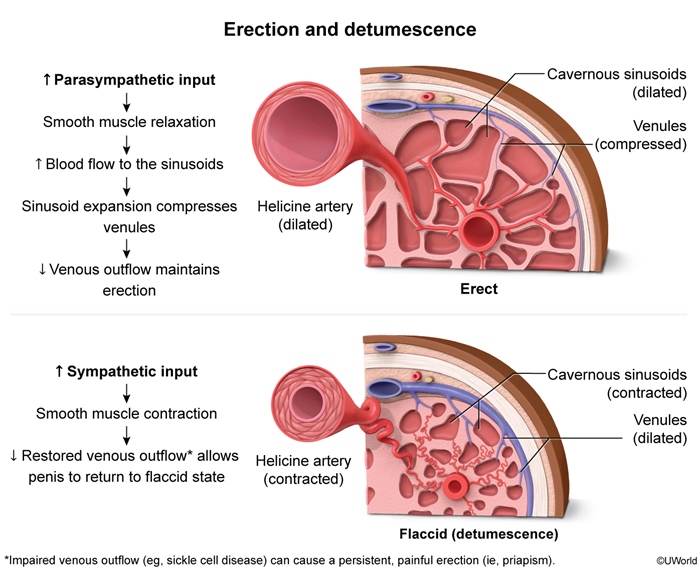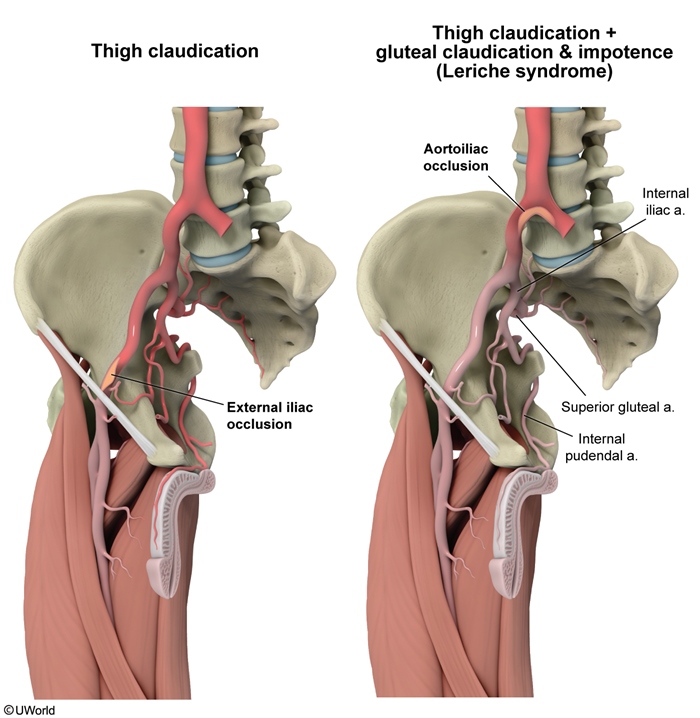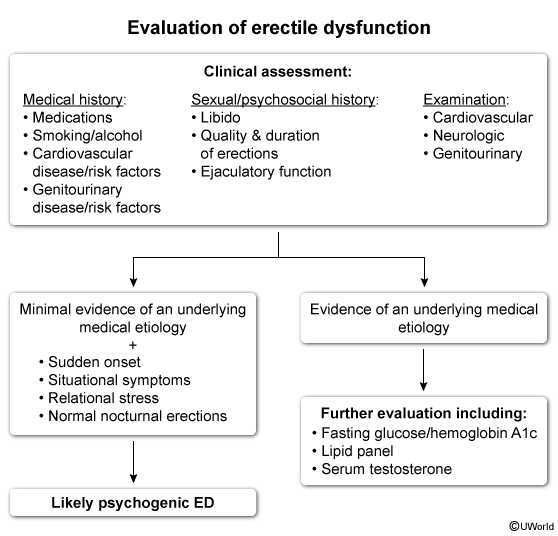Erectile Dysfunction
Article Sections
Introduction
Erectile dysfunction (ED) is defined as the persistent inability to achieve or maintain an erection sufficient for satisfactory sexual performance. It is a common condition that can significantly impact a patient's quality of life, affecting psychological well-being and intimate relationships. The etiology of ED is variable and usually multifactorial, involving vascular, neurologic, hormonal, and psychological factors.
Pathophysiology
Penile erection involves a complex interplay between vascular, neuropsychological, and endocrine systems (Figure 1). Initiation of erection typically begins with psychological arousal (eg, visual stimuli, fantasy), genital stimulation, or both. During sexual arousal, nitric oxide is released from nerve endings and endothelial cells in the corpus cavernosum, leading to the production of cyclic guanosine monophosphate (cGMP). This results in smooth muscle relaxation and increased blood flow into the corpora cavernosa, causing penile engorgement and erection.
Continue Learning with UWorld
Get the full Erectile Dysfunction article plus rich visuals, real-world cases, and in-depth insights from medical experts, all available through the UWorld Medical Library.
Figures


